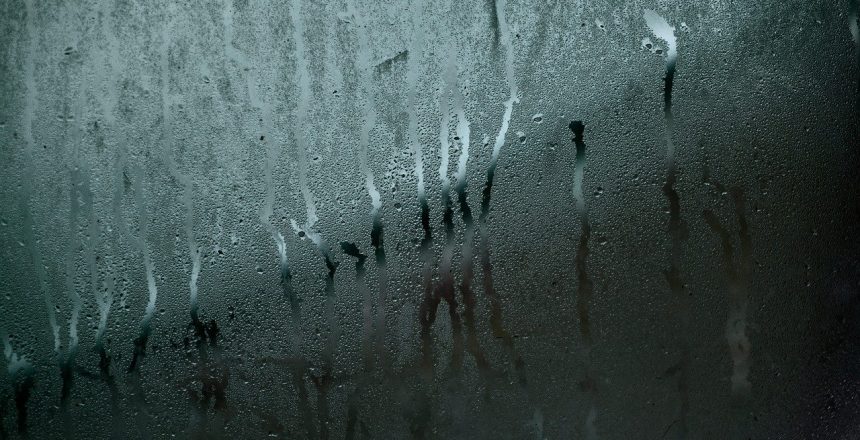- Our Services
Serve Notices
Calculators
- About Us
- Testimonials
- Resources
- FAQs
- Contact Us

Condensation is a problem in many homes, particularly in older houses and in the winter months. While you may have noticed it obscuring the view out of your windows, it can also be lurking on walls and in other areas hidden from your view. Although it may seem fairly harmless, these little droplets of water will eventually turn into unsightly mould, which can cause some serious problems. Not only can awful black blotches start to appear on your walls, but your home can also start to smell musty and it can harm your health.
According to the NHS[1], moulds produce allergens (substances that can cause an allergic reaction), irritants and, sometimes, toxic substances. Inhaling or touching mould spores may cause an allergic reaction, such as sneezing, a runny nose, red eyes and skin rash. Moulds can also cause asthma attacks. Babies, children, elderly people and people with existing respiratory or skin conditions are likely to be the most affected. So, if your household contains any of these ‘at risk’ groups, it is essential that you tackle your condensation problem right away.
Condensation is caused when warm air inside your home rises and comes into contact with a colder surface. As air contains moisture, the water is released onto the cold surface when the air loses its capacity to hold all of its vapour. Thus, many people will experience condensation in the winter as temperatures rise in the home with the heating turned on while cold weather conditions penetrate the walls and windows. As soon as the heating is turned off like many people like to do during the night or while out at work, condensation can start to form. This is a particular problem for homes with single glazed windows as they’re generally a lot colder than double glazed windows on the inside, so are likely to attract condensation.
However, condensation can also be caused by a lack of ventilation in your home. Cooking, taking hot showers, and drying clothes inside can all cause the relative humidity in the air to rise, creating the ideal environment for condensation to form. So, what’s the solution?
There are two methods of preventing condensation in your home which involve making small changes to the way you heat and ventilate your home:
Keeping your heating on permanently at a low temperature will ensure that the interior surfaces of your home stay at a consistent, warm temperature which will prevent them from absorbing moisture in the air. Furthermore, it’s actually much more cost-effective to leave the heating on low rather than repeatedly bringing the temperature up from cold when you need it on; and you might find that you’re more comfortable walking into and waking up in a warm home. An added benefit of leaving the heating on is that it can prevent pipes from freezing and subsequently bursting, which can cause all manner of problems.
Improving the ventilation in your home should help to keep condensation at bay. So while you’re busy cooking or taking a relaxing bath, open a nearby window to let the steamy water vapour escape. If that’s not possible or you’re worried about cold air coming in, you may benefit from installing extractor fans in your kitchen and bathrooms. It’s good practice to keep doors to bathrooms and kitchens closed even when extractor fans are operating. If you regularly dry clothes inside your home, dehumidifiers can help to reduce the amount of moisture in the air produced when the clothes dry.
The downside of these ventilation options is that they may increase the amount of heat that is lost from your home. Therefore, it would be prudent to contact a specialist to discuss your condensation problems and concerns before committing to a specific type of ventilation.
If condensation is making your windows cloudy, you can use a simple homemade cleaning solution to make them crystal clear once more. Just mix two cups of water with two cups of white wine vinegar and a few drops of washing-up liquid in a bowl or ideally in a clean, empty spray bottle. Apply the solution to the affected window or any other window that you’d like to clean, and use a clean, soft cloth to polish the pane. You can either wipe the excess water off with a squeegee or leave the window to air dry.
For a quick fix, simply squeegee away the condensation or wipe the window with a cloth to prevent mould from developing. It’s also possible to purchase a window vacuum and specialist steam cleaners if you feel like going the extra mile. Unfortunately, if you have double glazed windows it’s possible for condensation to form in between the two panes. When this occurs, the only resolution is to repair or replace the window.
It’s important to always seek advice from a professional if you are unsure about the cause and extent of any condensation or mould in your home. If you’re living in a flat or apartment, you should inform your freeholder or management company of any mould that appears on your walls as this could be a sign of structural damage.
Buying a leasehold property – what you need to know
Lease extension guide for leaseholders
[1] https://www.nhs.uk/common-health-questions/lifestyle/can-damp-and-mould-affect-my-health/
[2] https://www.envirovent.com/blog/condensation-101-everything-you-need-to-know/

Adam has worked in the property sector for 20+ years. He specialises in the ground rent and freehold reversion space, providing services to clients from private landlords to corporate investors. Freehold Sale launched In 2013 where Adam enjoyed success building and managing freehold portfolios with partner companies.